Grade 10 Exam > Grade 10 Notes > Physics for Grade 10 > Visible Light Spectrum & Reflection of Light
Visible Light Spectrum & Reflection of Light | Physics for Grade 10 PDF Download
| Table of contents |

|
| Visible Light Spectrum |

|
| Specular & Diffuse Reflection |

|
| Diffuse Reflection |

|
| Colour Filters |

|
| Colour & Reflection of Light |

|
Visible Light Spectrum
- Each colour within the visible light spectrum corresponds to a narrow band of wavelength and frequency
- The different colours of waves correspond to different wavelengths:
- Red has the longest wavelength (and the lowest frequency and energy)
- Violet has the shortest wavelength (and the highest frequency and energy)
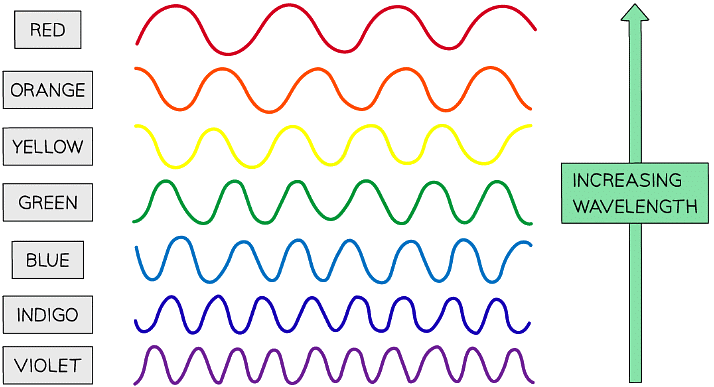 Colours of the visible spectrum with increasing wavelength
Colours of the visible spectrum with increasing wavelength
- Wavelength and frequency are inversely proportional, this means that:
- An increase in wavelength is a decrease in frequency (towards the red end of the spectrum)
- A decrease in wavelength is an increase in frequency (towards the violet end of the spectrum)
Specular & Diffuse Reflection
Specular Reflection
- Specular reflection is defined as:
- Reflection from a smooth surface in a single direction
- When light reflects off a smooth surface, such as a mirror, specular reflection occurs
- This is what gives a mirror its shiny appearance
- This is why a reflection can be seen clearly in a mirror
- In this case, the angle of reflection r is equal to the angle of incidence i
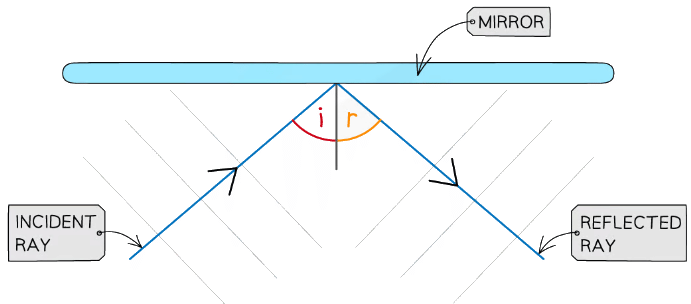 When reflecting off a mirror, the specular reflection occurs. The angle of incidence is equal to the angle of reflection
When reflecting off a mirror, the specular reflection occurs. The angle of incidence is equal to the angle of reflection
Diffuse Reflection
- Diffuse reflection is defined as:
Reflection from a rough surface causes scattering - When light reflects off a rough surface, which applies to the majority of surfaces, diffuse reflection occurs
- This is what gives objects a dull or matt appearance
- This is why a reflection cannot be seen clearly from a table surface, for example
- Even though a table's surface may look smooth from afar, it is actually made up of many tiny ridges which the light rays are scattered off
- When light scatters, it leaves the surface in all directions
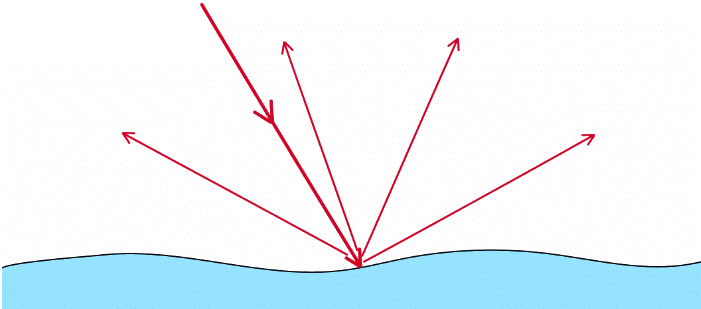 When light is reflected from the majority of surfaces it is scattered – a process known as diffuse reflection
When light is reflected from the majority of surfaces it is scattered – a process known as diffuse reflection
Colour Filters
- White light is a mixture of all the colours of the spectrum
- Each colour has a different wavelength (and frequency), making up a very narrow part of the electromagnetic spectrum
- White light may be separated into all its colours by passing it through a prism
- This is done by refraction
- Violet light is refracted the most, whilst red light is refracted the least
- This splits up the colours to form a spectrum
- This process is similar to how a rainbow is created
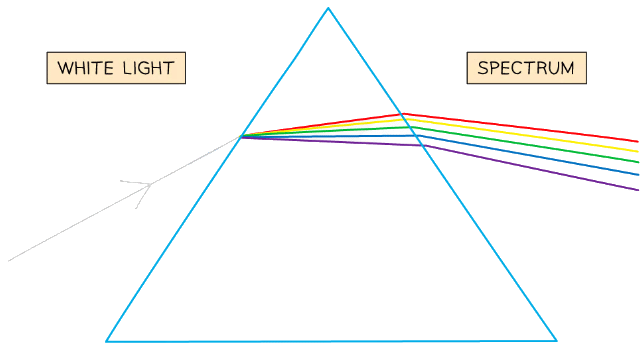 White light may be separated into all its colours by passing it through a prism
White light may be separated into all its colours by passing it through a prism
Colour Filters
- Colour filters work by absorbing certain wavelengths and transmitting other wavelengths
- These certain wavelengths correspond to certain colours
- When white light passes through a coloured filter, some colours are absorbed whilst others are able to pass straight through
- For example, when white light passes through a red filter:
- Red light is transmitted
- All the other colours are absorbed
- The colour that is transmitted is the same colour as the filter
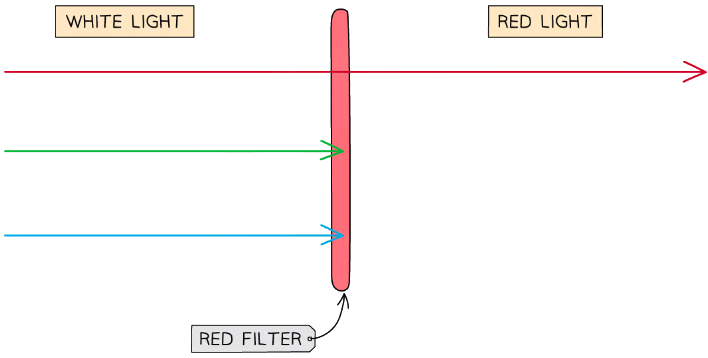 A red filter transmits only red light and absorbs all other colours of light
A red filter transmits only red light and absorbs all other colours of light
Colour & Reflection of Light
- The colour of an opaque object is determined by which wavelengths of light are more strongly reflected
- Wavelengths that are not reflected are absorbed
- Hence, this is why different objects appear to be different colours
- For example, white light upon a green surface will only have green light reflected and the others absorbed
- This light is reflected into our eyes to see the surface in that colour
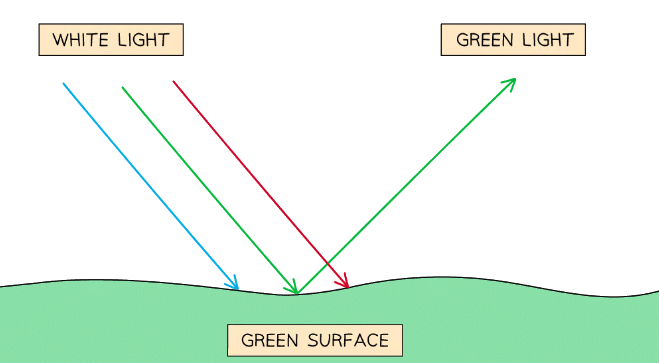 A green surface reflects green light and absorbs all other colours
A green surface reflects green light and absorbs all other colours
- An object will appear white if:
- All wavelengths are reflected equally
- An object will appear black if:
- All wavelengths are absorbed
- An object will appear transparent if:
- All the light is transmitted, and only a small amount is reflected or absorbed
The document Visible Light Spectrum & Reflection of Light | Physics for Grade 10 is a part of the Grade 10 Course Physics for Grade 10.
All you need of Grade 10 at this link: Grade 10
|
122 videos|150 docs|40 tests
|
Related Searches














